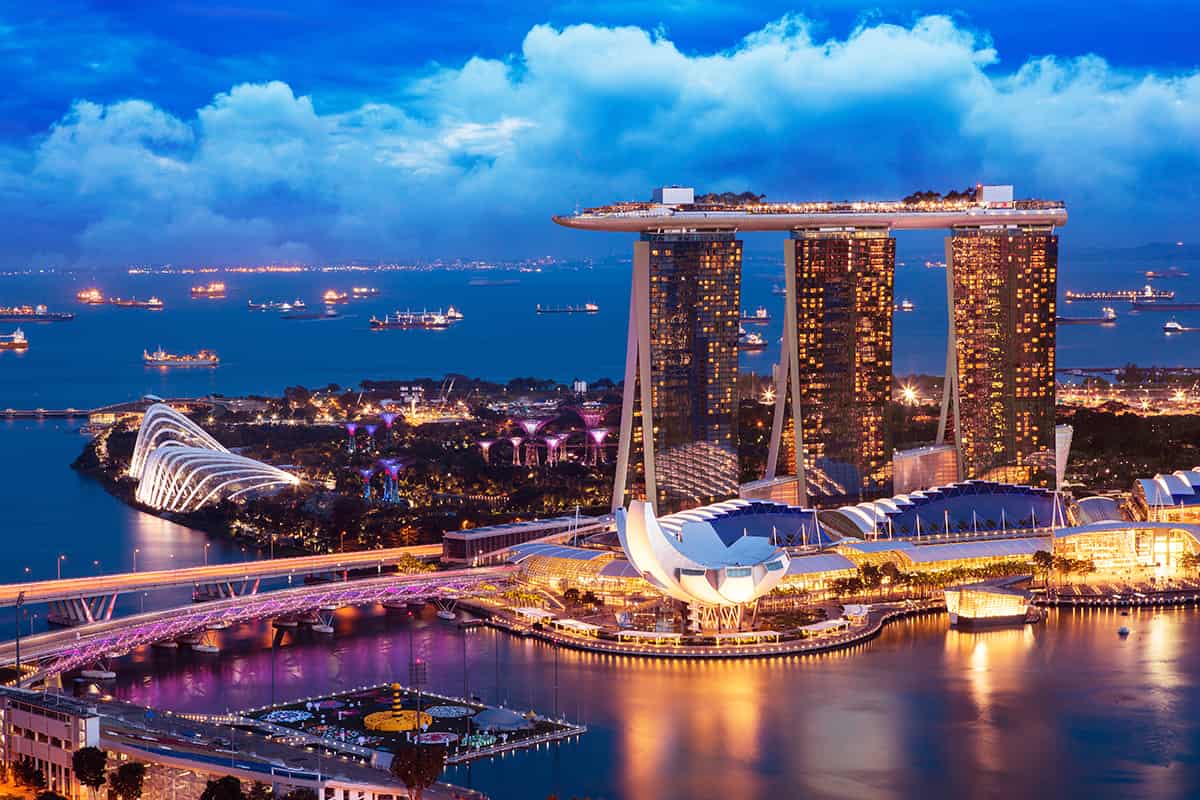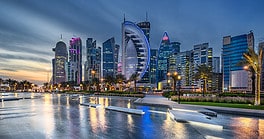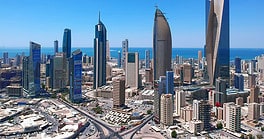Global Finance ranks the world's countries by their technological advancement and capacity to develop and leverage cutting-edge technology.
Global Finance ranks the world’s countries by their technological advancement and capacity to develop and leverage cutting-edge technology.
The ever-growing battle for technological advantage and supremacy continues. In a year full of advances in artificial intelligence, virtual reality, green technology, Global Finance has a new set of scores and rankings for national technological strength based on a unique fusion of evaluative metrics.
Most Technologically Advanced Country In The World: South Korea
South Korea remains a world leader in technological advancement, again taking the top slot. Its consumer electronics giants invest heavily in research and development, while its citizens combine advanced technological skills with an innovative culture. East Asia is well-represented in the top 20, with Japan, Taiwan and Singapore.
Europe And Asia At The Forefront Of Technology
Developed Asian and European nations continue to dominate the top of the rankings. Apart from the United States (2), all the top 17 countries are among the wealthiest countries in one of those two regions. Taiwan jumped up a few spots to #3, due to increasing investment into research and development. Germany—known for its engineering prowess since before World War II—is now actively using that expertise in the field of green energy. Many of the world’s leaders in technological innovation are small political jurisdictions that are less able to rely on rich supplies of natural resources for economic power, such as the Nordic nations, Belgium, Switzerland and Japan.
Israel (6), with its robust startup ecosystem, also gained significantly. The relatively small nation continues to put immense investment into research and development. Israeli companies are advancing rapidly in life sciences, military technology and other sectors, and the country has become a global leader—the world’s sixth largest hub—for raising tech capital. The UAE was a second Middle East standout, coming in at #18.
Japan (16), on the other hand, fell back significantly in the rankings because the percentage of its population that uses the internet is falling. Japan sports a notable reliance on analog in the public sector, and also declined in its Digital Competitiveness due to a lack of business technological agility and declining international experience in technology.
Diminished Expectations for Technological Innovation: China And India
The world’s most populous developing countries, both expected to see strong growth in technological progress, struggled in this year’s ranking, despite government support, deep scientific knowledge and significant technological expertise in various sectors.
China (41) and India (65) fell back in the rankings, despite prevailing wisdom that both would advance rapidly. China’s internet population, at around 73%, still falls very far below its economic peers such as Russia, Mexico, and Argentina or the group of most technologically advanced countries. While China invests significantly into research & development for critical technologies, it lacks the ability to utilize its population for greater technological advancement. The Chinese government has also cracked down on the private technology sector, limiting and even reducing its reach and size.
India, for its part, has invested very little of its country’s GDP into research and development. While the establishment of the National Research Foundation is designed to help increase investment and support for technological and scientific education and advancement, it may not play the pivotal role that India desires. To round it off, Brazil (55), Indonesia (59), and Russia (44) all continue to rank poorly and have made few if any gains in technological strength. Russia scores above average only in its percentage of population that uses the internet. The war with Ukraine has spurred an exodus of technological expertise, creating potential for a “brain drain” of technological and scientific professionals for years to come.
How We Rank National Technological Advancement
First, we incorporate two metrics that represent the technological breadth and adoption for a country: internet users as a percentage of a country’s population, and LTE (4G) users as a percentage of the population. This combination illustrates the availability of internet use for the wider population and counters the over-reliance on measuring the strength of only high-tech industries and institutions. The third metric is a Digital Competitiveness Score, created and compiled by the IMD World Competitiveness Center. This conglomeration is based on multiple factors including technological knowledge, current technological strength, and readiness/capability to create and advance new innovations. Essentially, it measures a country’s current technological environment and its prospects for future success.
The final metric is the portion of GDP spent on research and development (R&D), which represents both the government’s investment into the future technological development as well as the desire to compete for future advancement. All of these metrics combine to rank countries by both their vanguard of technological capabilities but also their populations’ mastery of said technologies.
The scores provide some insights into where countries differentiate themselves from those below them. As opposed to one year ago, the differences are now more pronounced in the Digital Competitiveness Score and the Research & Development investment. These factors have seen increasing breadth between the top countries and the bottom countries. Meanwhile, the differences between the top countries and bottom countries have decreased in both LTE penetration and Internet users as a percent of the population. This makes sense as once a country expands its internet and LTE base to nearly 100%, it is impossible to keep going up. Meanwhile, developing countries can gain ground by expanding their internet access.
| World’s Most Technologically Advanced Countries And Territories |
|---|
| Ranking | Country | Composite Score |
| 1 | 🇰🇷South Korea | 6.63 |
| 2 | 🇺🇸United States | 4.94 |
| 3 | 🇹🇼Taiwan | 4.90 |
| 4 | 🇩🇰Denmark | 4.79 |
| 5 | 🇨🇭Switzerland | 4.68 |
| 6 | 🇮🇱Israel | 4.10 |
| 7 | 🇫🇮Finland | 3.94 |
| 8 | 🇳🇱Netherlands | 3.79 |
| 9 | 🇸🇪Sweden | 3.76 |
| 10 | 🇳🇴Norway | 3.59 |
| 11 | 🇸🇬Singapore | 3.50 |
| 12 | 🇬🇧United Kingdom | 3.49 |
| 13 | 🇧🇪Belgium | 3.42 |
| 14 | 🇩🇪Germany | 3.25 |
| 15 | 🇦🇹Austria | 2.99 |
| 16 | 🇯🇵Japan | 2.97 |
| 17 | 🇮🇸Iceland | 2.97 |
| 18 | 🇦🇪United Arab Emirates | 2.88 |
| 19 | 🇨🇦Canada | 2.54 |
| 20 | 🇦🇺Australia | 2.29 |
| 21 | 🇭🇰Hong Kong SAR | 2.26 |
| 22 | 🇪🇪Estonia | 2.11 |
| 23 | 🇫🇷France | 1.42 |
| 24 | 🇶🇦Qatar | 1.38 |
| 25 | 🇨🇿Czech Republic | 0.89 |
| 26 | 🇸🇮Slovenia | 0.89 |
| 27 | 🇱🇹Lithuania | 0.89 |
| 28 | 🇪🇸Spain | 0.71 |
| 29 | 🇧🇭Bahrain | 0.61 |
| 30 | 🇱🇺Luxembourg | 0.53 |
| 31 | 🇳🇿New Zealand | 0.47 |
| 32 | 🇭🇺Hungary | 0.31 |
| 33 | 🇲🇾Malaysia | 0.26 |
| 34 | 🇱🇻Latvia | 0.10 |
| 35 | 🇨🇾Cyprus | -0.05 |
| 36 | 🇮🇪Ireland | -0.21 |
| 37 | 🇵🇹Portugal | -0.22 |
| 38 | 🇨🇳China | -0.23 |
| 39 | 🇸🇦Saudi Arabia | -0.31 |
| 40 | 🇵🇱Poland | -0.39 |
| 41 | 🇸🇰Slovak Republic | -0.72 |
| 42 | 🇮🇹Italy | -0.85 |
| 43 | 🇹🇭Thailand | -0.98 |
| 44 | 🇷🇺Russia | -0.99 |
| 45 | 🇭🇷Croatia | -1.23 |
| 46 | 🇬🇷Greece | -1.59 |
| 47 | 🇷🇴Romania | -1.90 |
| 48 | 🇧🇬Bulgaria | -2.38 |
| 49 | 🇰🇿Kazakhstan | -2.40 |
| 50 | 🇹🇷Turkey | -2.56 |
| 51 | 🇨🇱Chile | -2.76 |
| 52 | 🇦🇷Argentina | -3.34 |
| 53 | 🇿🇦South Africa | -3.54 |
| 54 | 🇯🇴Jordan | -3.67 |
| 55 | 🇧🇷Brazil | -3.81 |
| 56 | 🇲🇽Mexico | -4.48 |
| 57 | 🇺🇦Ukraine | -4.49 |
| 58 | 🇧🇼Botswana | -4.56 |
| 59 | 🇮🇩Indonesia | -5.06 |
| 60 | 🇲🇳Mongolia | -5.07 |
| 61 | 🇵🇪Peru | -5.20 |
| 62 | 🇮🇳India | -5.38 |
| 63 | 🇵🇭Philippines | -5.77 |
| 64 | 🇨🇴Colombia | -6.15 |
| 65 | 🇻🇪Venezuela | -7.95 |




